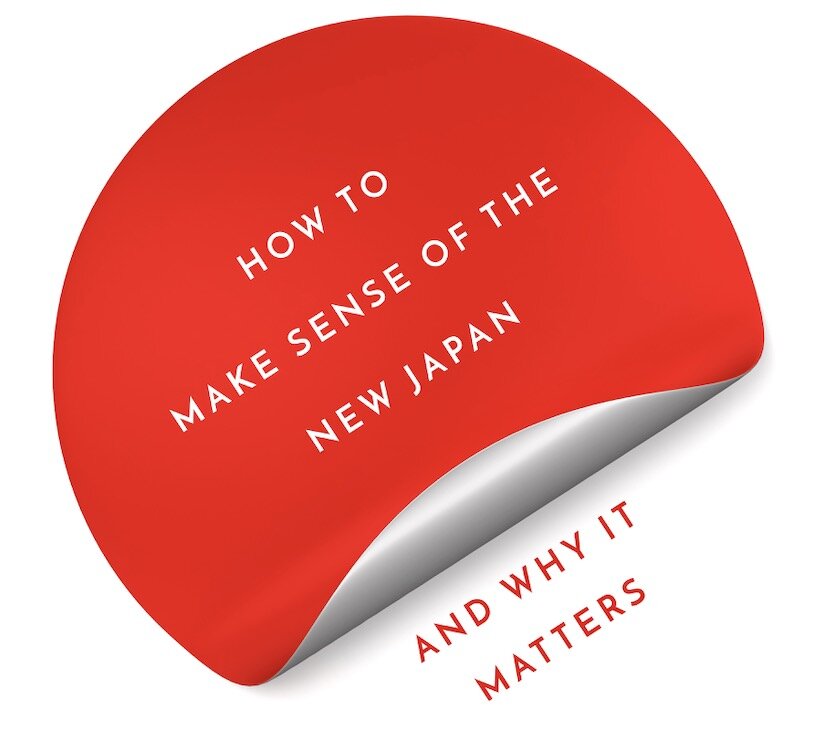“Abenomics” : How Well Did He Do
The Nikkei Index 225 over the course of Abenomics: 2.5x
Now that Prime Minister Abe has resigned, we will soon see a plethora of articles assessing his economic plan, “Abenomics”. Most of these articles will focus on assessing each item of Abenomics, chapter and verse, to give grades to each policy target, and then highlight all the areas where the Prime Minister has flunked. Yet as we read these, we should be aware that such grading exercises may miss the larger point. While macroeconomics and internal LDP politics may require a more nuanced evaluation, from the business perspective – and perhaps for society overall — the true intent of Abenomics was to change the nation’s mindset toward reform and to marginalize the Old Japan voices. And the means to this end was to give the government’s imprimatur to the reformers in all walks of official life, be that bureaucrats, CEOs, consultants, opinion leaders or other influencers. And in that regard, Abenomics gets an A.
Abenomics as an Economic Policy Plan
Abenomics was launched in 2012 under the rallying cry of “Japan is back”, and called for a decade of reforms. The initial announcement focused on “overcoming deflation” and laid out a 3-pronged approach: macroeconomic measures (i.e., quantitative easing), fiscal stimulus (government spending), and structural reforms (deregulation). In 2015, “Abenomics 2.0” was announced, with grand aspirations to “promote dynamic engagement of all citizens”, enabled by a robust economy, childcare support and social security. This ambitious vision was also tied into the 2020 Olympics, when Japan was to be ready to showcase a new society characterized by sustainability, diversity, inclusion, and equality, as we discussed in a recent Japan Zoominar.
Japan has always been a “planning” nation. There are plans for everything, including the regular corporate 3-year plans, comprehensive meeting agendas, and of course detailed personal travel plans. In the economic policy realm, too, Japan has long had plans, such as Ikeda Hayato’s “income doubling plan” of the 1960s, and subsequent 5-year economic growth plans. During the postwar growth period, Japan’s government even had a stand-alone “Economic Planning Agency”, until it was merged into the Cabinet Office in 2001. Japan is also one of just a few countries to draft regular “energy mix” plans, such as the current deliberations that aim at 2040 (see energy Zoominar).
Astute observers have long known better than to take such plans at face value. Chalmers Johnson, as early as in 1982, very clearly lays out how these economic plans were not at all communist-style orders. Rather, they were “indicative” plans, to chart the direction and set an aspiration. Arguably, these plans were more important for the political processes of forging agreements and putting everybody on the same path, than they were in their actual execution. For good measure, during the period of rapid growth they were usually also outdone, and in general, deviating from the plan was never really a big issue.
Other nations don’t make such detailed plans. One reason may be that if you don’t have a plan, you can’t be assessed against it. Yet, because we are unfamiliar with such planning, we may also be apt to misinterpret the plan’s true purpose. We tend to see a plan as a goal line, with binding targets. In contrast, most Japanese see it as a lever, a process to push change through the system by getting buy-in from key players. Details are important but in the end, they don’t matter as much as whether the change of direction has been accomplished.
The True Purpose of Abenomics in Business
It is true that Abenomics has fared poorly in the macroeconomic realm, as it did not end deflation, increase GDP to the ¥600 trillion mark, or increase economic growth - for reasons that nobody really can explain.
In business and management, however, Mr. Abe ought to be quite pleased with what he has been able to accomplish. His agenda was to create a “new normal” for Japanese business, by building a new type of leadership in companies, government and markets. The goal was to empower a group of reformers would then make the country more attractive to global finance, more competitive in global commerce, and more resilient to market shocks. Challenges remain, but even the fiercest Abe critics won’t deny that, compared to 2012, Japan has much improved on all three counts. And, the process to get there was to nudge important players to take initiative and change. To assess the success of Abenomics, then, we need to look who is in important positions now.
Over the past eight years, Abenomics has changed the tone of what is important, who is “in”, what kind of companies are celebrated, who is appointed to deliberation councils, and who are the opinion leaders. The chairman of Keidanren, the conservative industry umbrella association, is the former CEO of Hitachi Ltd., who completely changed the trajectory of Hitachi and launched a strategic pivot of the company. As Keidanren chief, he helped push the “Workstyle Reform” program in 2019, and agreed to make substantial changes to traditional processes. For example, the infamous “shūkatsu” hiring process has been phased out, and lifetime employment is being discussed in a new light. Keidanren also became an official supporter of J-Startup, a government program to increase large company participation in the country’s startup ecosystem.
The leadership and important advisors in the ministries have also changed. In 2014, the Abe administration finalized a process started by Prime Minister Koizumi in the early 2000s and pulled the powerful “Personnel Affairs Bureau” into the Cabinet Office. This granted the Prime Minister control over all elite bureaucrat appointments, and this control was deftly deployed to bring the reformers to the top. The policy deliberation councils of the various ministries were also staffed with reformers, and over the past decade the council member’s list has begun to read like a “Who is Who” in Japanese change leaders in profitable companies, consulting firms and financial advisories. All these processes are a far cry from the erstwhile list of “same old” representatives of vested interests.
The financial markets, too, have seen great change – in terms of corporate governance, the stewardship code, and the increase in average corporate profitability (especially if adjusted for external shocks). As I argue in my recent book, the main policy tools to bring about this shift were nudging and shaming – it has become rather uncool to be a low-performing player. The JPX400 index was introduced in 2014, with the explicit goal to shame companies into being more efficient. In corporate governance, companies were nudged to not only inviting truly independent directors to their boards, but to include women as well – almost unthinkable just 15 years ago. This was done through soft law, and there was no punishment for not going along. But the shaming was so skillfully rolled out that the compliance rate among very large companies reached almost 100% within just a few years. Other areas where nudging launched a clear change in direction, slowly but certainly, include Womenomics, new work place behaviors, decision-making processes and corporate strategy and repositioning. Taken together, viewed from the perspective of overall business system change, Abenomics deserves an A.
The New Normal in Japanese Business : Will it Stick?
Of course, the final assessment will depend on the long-term impact: Has Abenomics truly changed Japan’s trajectory? Jesper Koll, at Wisdomtree, has identified 4 areas where we should look for indicators of a reversal: the consumption tax (a thorny issue that will never go away), the above-mentioned top bureaucratic appointments, the role of Prime Minister advisory councils, and global leadership. He predicts that the elite bureaucrats will make a roaring comeback, and there is a significant likelihood that Japan will once again become a rudderless place that empowers conservative thinkers.
Part of this outlook reflects his doubts of the leadership skills of current LDP politicians. In a parliamentary system, the party rules (not a single person), and so the LDP will now anoint a new top gun. Will Abe’s successor be as effective in making appointments toward a New Japan? Perhaps not – an assessment that implicitly underscores Abe’s outstanding skills as a statesman.
Be that as it may, from the business perspective, the reformers have already made significant inroads, and they will not just disappear quietly. After all, they are the bureaucrats, CEOs, consultants, and opinion leaders that have replaced the “old normal” of Japanese business. The battles may continue, but so may the spirit of Abenomics – one of Japan’s economic plans that will surely make it into the history books.







